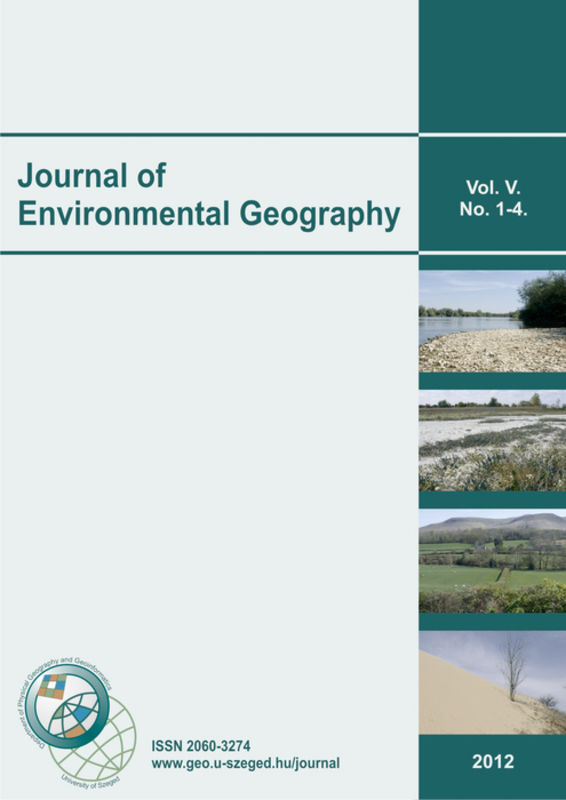Statistical Analysis of Weather Parameters for Sustainable Flight Operation in Nigeria
Main Article Content
Abstract
The recent complications in the weather system, which oftentimes lead to flight cancellation, delay and diversion have become a critical issue in Nigeria. This study however considers the weather related parameters and their impacts on flight disruption in the country. Weather data (on thunderstorm, wind speed and direction, visibility and cloud cover) and flight data (delay, cancellation and diversion) were collected from Murtala International Airport, Ikeja-Lagos, Nigeria. The data covered the period between 2005 and 2020. However, Regional Climate Models (RCMs) were also used to run climate data projections between year 2020 and 2035 in the study region. The study employed Statistical Package for Social Sciences (SPSS) software for the descriptive and inferential analysis. Time series analysis, Pearson Moment Correlation for interrelationship among the weather parameters and the flight disruption data, and multiple linear regression analysis were applied to determine the influence of weather parameters on flight disruption data. Results show that cloud cover and high visibility are negatively correlated. Wind speed has positive relationship with wind direction; and an inverse relationship between visibility, thunderstorm, and fog. Direct relationship exists between highest visibility and thick dust, wind speed and cloud cover. Thick dust, wind speed and cloud cover indicate increased visibility level in the study area. Flight delay is prominent over flight diversion and cancellation, which indicates their relevance in air traffic of the study area. The prediction model indicates high degree of cloud cover at the beginning of every year and later declines sharply in 2035, the visibility flattens out by the year 2025, and low pattern of thick dust was calculated in the same pattern in 2011, 2016 and 2027. Based on this conclusion, the study recommends accurate weather reporting and strict compliance to safety regulations, and attention should be paid to changing pattern of weather parameters in order to minimize fight related disasters.
Downloads
Article Details
x
References
Arizona-Ogwu, L.C. 2008. Airports for Lease: Is FAAN a Fun? NigeriaWorld, March 4th.
Ayoade, J.F. 2004. Introduction to Climatology for the Tropics. Spectrum Books Ltd., Ibadan, XVII. 297 p.
Knecht, W.R. 2008. Use of weather information by general aviation pilots, Part II, Qualitative: Exploring factors involved in weather-related decision making. (Technical Report DOT/FAA/AM08/7). Washington, DC: Federal Aviation Administration, Office of Aerospace Medicine. 1–7.
McFadden, K. L., Hosmane B. S. 2001. Operations safety: an assessment of a commercial aviation safety program. Journal of Operations Management 19, 579–591. DOI: 10.1016/S0272-6963(01)00062-610.1016/S0272-6963(01)00062-6
Mirza, A.K., Page, C., Geinde, S. 2009. An Approach to Flight Safe-Using GML/XML Objects to Define Hazardous Volume Space for Aviation, France. Retrieved September 25, 2020 from Flysafepaper.htm.1–14.
Nwaogbe, O. R., Wokili, H., Omoke, V., Asiegbu, B. 2013. An analysis of the impact of air transport sector to economic development in Nigeria. IOSR Journal of Business and Management 14(5), pp. 41–48. DOI: 10.9790/487X-145414810.9790/487X-1454148
Pospichal, B., Karam, D.B., Crewell, S., Flamant, C., Hünerbein, A., Bock, O., Saïd, F. 2010. Diurnal cycle of the inter tropical discontinuity over West Africa analysed by remote sensing and mesoscale modelling. Quarterly Journal of the Royal Meteorological Society,136(s1), 92–106. DOI: 10.1002/qj.43510.1002/qj.435
Riehl, H. 1965. An Introduction to the Atmosphere (International Student ed.). McGrawHill Book Company Ltd., Tokyo
Rodenhuis, D. 2004. Adverse weather and air traffic delays.11th Conference on Aviation Range and aerospace. Online available at https://ams.confex.com/ams/pdfpapers/81938.pdf
Stringer, E.T. (ed) 1989. Foundations of Climatology. An Introduction to Physical, Dynamic Synoptic and Geographical Climatology. Surjeet Publications, Delhi
Schaefer, L.,Millner, D. 2001. Flight delay propagation analysis with the detailed policy assessment tool. 2001 IEEE International Conference on Systems, Man and Cybernetics. e-Systems and e-Man for Cybernetics in Cyberspace (Cat.No.01CH37236) 2, 1299-1303. DOI: 10.1109/ICSMC.2001.973100.10.1109/ICSMC.2001.973100
Smith, K. 1975. Principle of Applied Climatology. McGraw Hill Company Ltd., UK
Waitz, I., Townsend,J., Cutcher-Gershenfeld,J., Greitzer,E., Kerrebrock, J. 2004. Aviation and the environment: A National Vision Statement, Framework for Goals and Recommended Actions, 55 p.
Weli, V.E., Ifediba, U.E. 2014. Poor Weather Conditions and Flight Operations: Implications for Air Transport Hazard Management in Nigeria. Ethiopian Journal of Environmental Studies & Management 7, 235–243. DOI: 10.4314/EJESM.V7I3.210.4314/ejesm.v7i3.2





